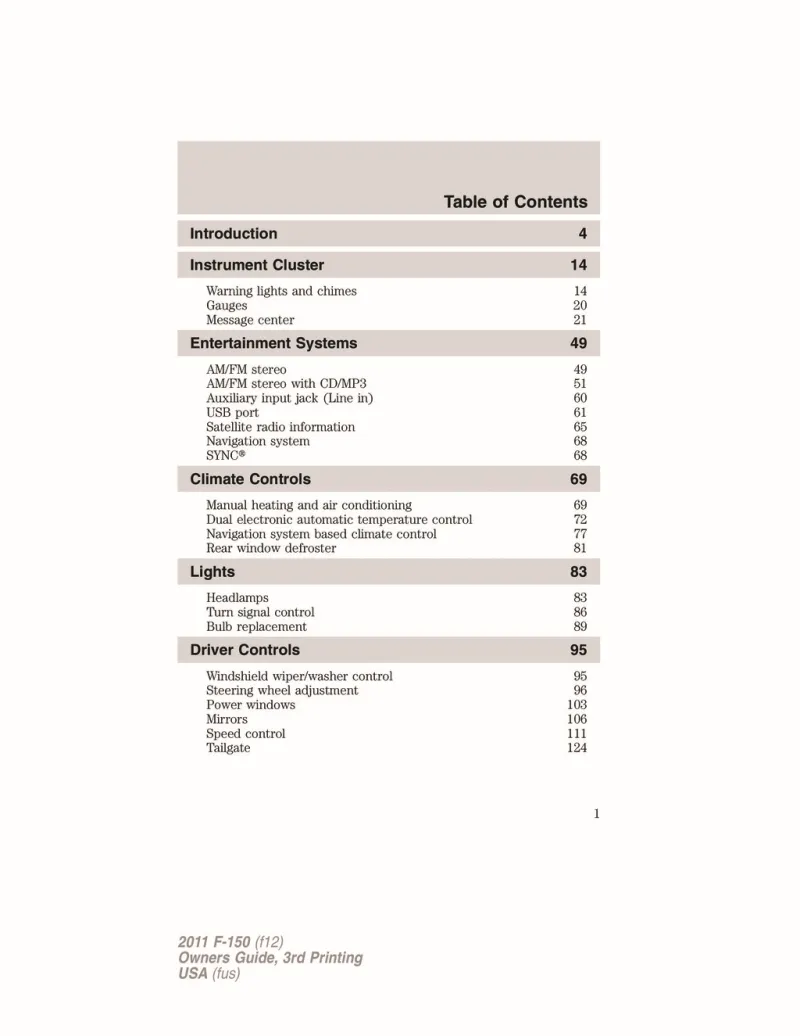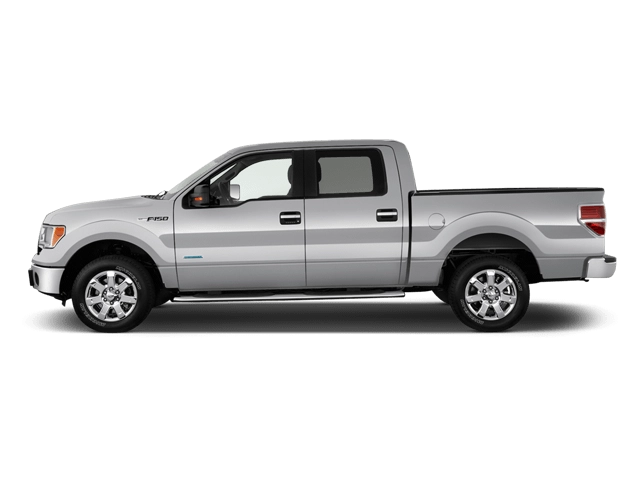2011 Ford F150 Owner's Manual

Table of Contents
2011 Ford F150 Overview
Introduction
The 2011 Ford F150 represents a notable blend of power, performance, and advanced technology in the realm of full-size pickup trucks. Renowned for its versatility, it caters to a diverse audience—from weekend warriors seeking adventure to business professionals needing a reliable workhorse. With a robust design and an array of trims, it is tailored to meet various preferences and needs, establishing itself as a cornerstone in the legacy of Ford trucks.
Powertrains
The 2011 F150 offers an impressive selection of powertrains, ensuring optimum performance and efficiency. Standard is a 3.7-liter V6 engine producing 302 horsepower, delivering commendable fuel economy for a truck. For those seeking more power, an optional 5.0-liter V8 engine, generating 360 horsepower, is available. Additionally, performance enthusiasts can opt for the 6.2-liter V8, offering 411 horsepower, making it perfect for heavy-duty applications. Each engine pairs elegantly with a smooth-shifting six-speed automatic transmission, providing a seamless driving experience with remarkable towing capabilities.
Trims
The 2011 Ford F150 is available in several distinct trims, including the XL, XLT, Lariat, FX4, King Ranch, and Platinum. Each trim level brings unique features and enhancements, allowing consumers to select a package that best suits their lifestyle. From the no-frills XL for practical users to the luxurious Platinum with premium leather and advanced tech features, there's a F150 for everyone.
Features
Throughout its trims, the 2011 F150 is packed with an array of features aimed at comfort, safety, and convenience. Standard items include air conditioning, power windows, and a basic audio system, while higher trims add options such as navigation, Bluetooth connectivity, and a rearview camera. Additionally, advanced safety features and a durable bed design ensure that this truck is as dependable as it is enjoyable to drive.
Owner's Manual
The 2011 Ford F150 owner's manual is an essential resource for any owner, providing detailed information on maintenance, safety, and operational features. It covers everything from basic troubleshooting to advanced technological features, ensuring you can maximize your truck's performance and longevity. Comprehensive in its guidance, this manual serves as a valuable companion to help you navigate every aspect of truck ownership seamlessly.
User manual download
The Ford F150 owner manual for the 2011 model year is to be found in PDF downloadable format on this page. The owner manual for the model year 2011 is free and in English, but the repair manuals are usually not easy to get and may cost more.
Manual Questions
Fill the form below and someone will help you!

